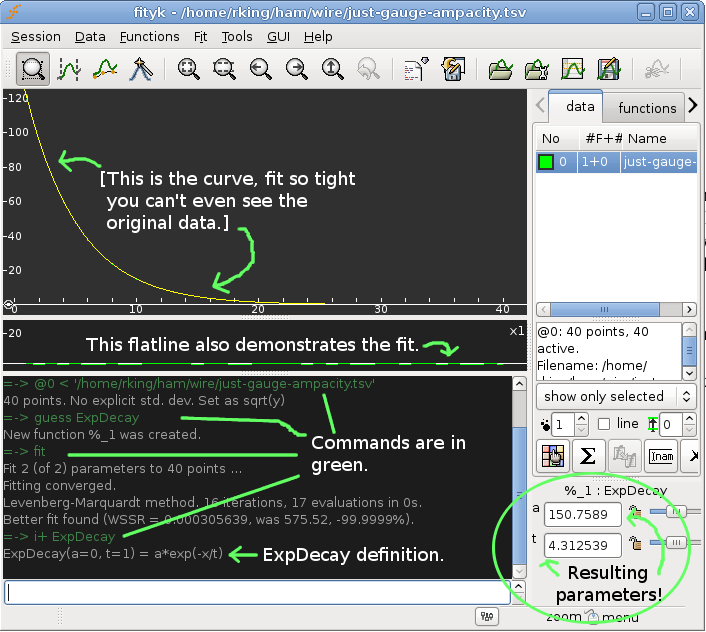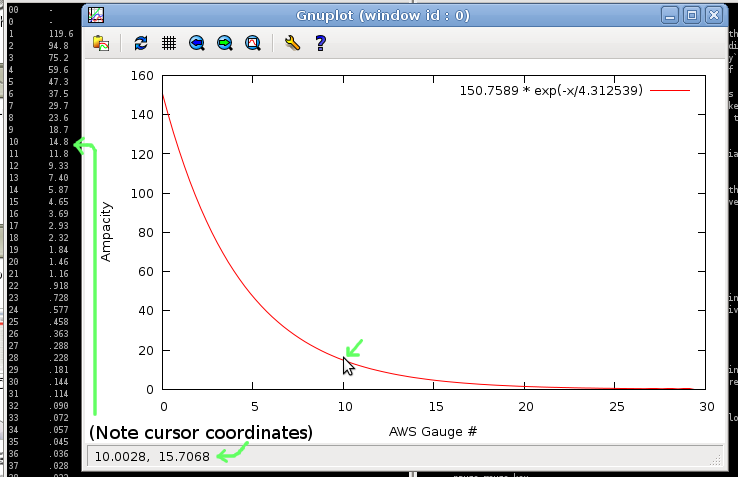This revision is from 2010/07/07 18:25. You can Restore it.
This is part an answer to a question I was running into, and half a demonstration of some handy free/open-source tools.
The Ham General test asks questions such as this:
What is the minimum wire size that may be safely used for a circuit that draws up to 20 amperes of continuous current?
When I started this process, I had no idea about the answers. After Googling, I found a http://www.interfacebus.com/Reference_Cable_AWG_Sizes.html. That is a great start, and I could of course just look up this specific question, and keep doing so for similar questions until I developed a sense for it. But that's no fun.
Instead, I used http://www.unipress.waw.pl/fityk/fityk-manual.html to import the data and find out what function maps AWG gauge to its maximum Amp rating. Fityk is a favorite of mine. Though I have not used it much, when I do need it the process is rewarding and fun. The following commands did the trick:
commands > '/home/rking/ham/wire/awg.fit' @0 < '/home/rking/ham/wire/just-gauge-ampacity.tsv' guess ExpDecay fit i+ ExpDecay
Here is a screenshot of the process:

Once you learn how that interface works, you'll see that the solution is:
150.7589 * exp(-x/4.312539)
As a sanity check, I graphed it in http://www.gnuplot.info/docs/gnuplot.html, which is another rewarding program. Here is the source for that:
set ylabel "Ampacity" set xlabel "AWS Gauge #" set xrange[0:30] plot 150.7589 * exp(-x/4.312539) pause mouse
And here is a screenshot of the output, which looks reasonable to me:

If I had to describe that curve in terms of three segments between four points, I'd probably pick:
[0,∞] to [4,60] to [10,15], to [25,~0]
In other words, if it's between 4 and 10 gauge, its rating is proportionally 60 to 15 amps.
So, to answer the above question, 8 gauge should be safe for 20 amps, and I checked that this was the smallest gauge that would work using http://www.rubyinside.com/irb-lets-bone-up-on-the-interactive-ruby-shell-1771.html:
irb(main):021:0> 150.7589 * Math.exp(-8/4.312539) => 23.5853600904787 irb(main):022:0> 150.7589 * Math.exp(-9/4.312539) => 18.7041275376549
Strangely enough the answer the test wants is 12 gauge. Ha!
I don't know how they got that answer. It is not consistent with the table I used, but it was a fun trip.